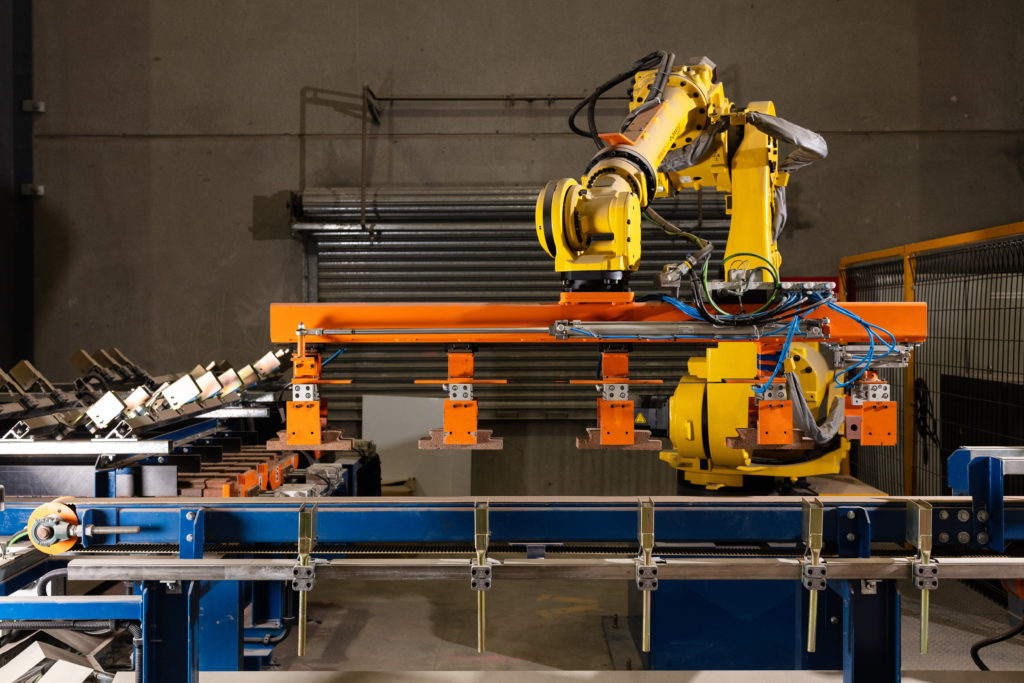Australia’s major cities look set to get even taller to accommodate a booming population of urban dwellers. Innovative construction methods and materials will be required to ensure high rises can be safely built higher, faster and smarter.
Prefabricated construction methods have been a game changer for high-rise construction by saving on building time, reducing urban disruption and increasing onsite safety. Now, precast materials are adding further benefits, especially when it comes to high-rise construction in densely populated cities.
For Australian cities like Melbourne and Sydney, every inch of construction space will be crucial in ensuring that urban centres can accommodate the needs of the people who live and work within them. However, as zero-lot boundary areas become more common, construction methods become more challenging.
Building products such as Panel Brick, manufactured by Austral Precast, are rising to the challenge. Prefabricated brick panels, they can be installed by crane, eliminating the need for scaffolding that would normally be required for buildings with brick facades.
Josh Haley, a Technical and Research Engineer for Brickworks, worked closely on the development of Panel Brick and said the space-saving element is a key benefit of the product.
“It’s great for zero-lot boundary areas,” he said.
“If you’re building a high rise in a CBD against a boundary and the building next to your site is 15 stories shorter than your building, you can’t put scaffolding down there. Panel Brick a real space saver during the construction process.”
Panel Brick is made from clay bricks and concrete in thicknesses from 110 mm to 250 mm. Each panel facing has the appearance of genuine, individual bricks and features a colour variety of real clay bricks. The facing also features a dovetail backing to ensure strong interlock with the precast panel.

“It has the appearance of individual bricks,” Haley said.
“It’s made with the exactly the same bricks that we make and sell through Austral Bricks, but they are just a thinner version.”
In the manufacturing procuring process, the thin bricks are placed on the table face and a high-strength grout mix is poured over the back of them to make it a precast concrete panel with bricks at the front.
The product has been fully tested for compressive strength, lateral and racking loads, flexural strength, and fire resistance.
“The panels are fully engineered to comply with Australian Standards such as AS3600, and the National Construction Code,” Haley said.
“They are designed and built for cyclone, fire and food resistance.”
Along with saving on construction space, they also save on construction time. The panels can be made in lengths up 12 m and at heights up to 3.6 m, making them a much faster alternative to regular brick laying.
“Brick facades have a lot of charm, but it takes such a long time to put brick facades on,” Haley said.
“That equates to extra time on site and extra staffing costs.”
Panel Brick also reduces waste on site, as it eliminates the need for wet trades.
“Because its prefabricated there are no loose bricks hanging around on site, so that’s another waste reduction and safety improvement,” Haley said.
Another benefit of precast products like Panel Brick is that they can be used as a structural reinforcement.
“Panel Brick can the integrated as a structural element of the building,” Haley said.
“So, if you have a 250 mm thick panel, you can use 200 mm of that as a structural column in the building itself.
Haley said precast products like Panel Brick will change the way high-rise buildings will be built.
“They will help the construction sector to build with brick higher and faster — and with greater safety onsite.”

